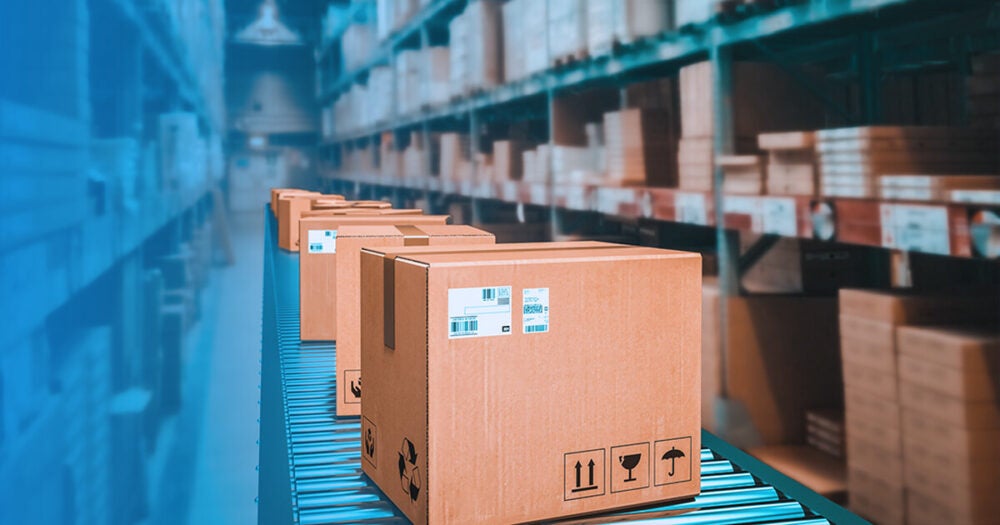Despite best efforts and quality control solutions, there are times when a product does not meet the expectations of consumers, companies and buyers. And in some of those cases, the product will be returned. However, shippers do have an opportunity to educate themselves on the returns processes which includes RMA shipping . In doing so, they can save time and money and protect their company’s reputation.
When a product is returned, it must go through the return process, referred to as reverse logistics. Obtaining a return merchandise authorization (RMA) is typically the first step. However, the RMA may include several service-after-sale factors. These may include warranty management, service agreements, analysis of returns, management of end-of-life equipment and other considerations. So, while it may not be complicated, it certainly does help to know the return management process from beginning to end.
GlobalTranz, an industry-leading third-party logistics (3PL) provider, helps shippers streamline their returns process. Below, we take a look at how RMAs function and review some common examples of RMA policy.
What is return merchandise authorization (RMA)?
RMA shipping exists as inverse flows of products within the reverse logistics industry . Return merchandise authorizations serve two primary functions: they help prevent improper returns and they help in gathering information about the return in question. Some companies do handle RMAs in-house. However, working with a shipping partner like GlobalTranz can streamline the return logistics process.
For example, a business may sell 1,000 items and 25 percent of them are sent for return due to a manufacturing defect. Rather than having 250 customers arriving in the store, or sending the items to your business, you need a means of encouraging the backward flow of these products to the manufacturer and obtaining financial compensation for doing so.
In addition, small-to-medium sized businesses (SMBs) may not have the resources needed, which includes both financial and labor resources, to handle mass return process es for defective merchandise. As a result, employing a 3PL, that has the technology in place to handle RMS processes seamlessly, becomes crucial to your ability to continue operating.
Common Examples of RMA Policy and Procedures
Today, most RMA requests are completed online. Upon receiving the initial request, the company, aided by the help of reverse logistics technology, needs to begin gathering information about the product. This information may include:
- Date of sale
- Product being returned
- How it was delivered
- Channel through which the product was obtained
- Method of payment
- Number of items
- Reasons for return
The RMA process includes gathering information
When gathering information, an RMA process needs to follow three different paths. These paths focus on the relationship between the supplier and channel of transport, the product quality and consumer accommodation.
- Relationship between supplier and channel — When a product is returned free of defects, it may be used for multiple purposes. For example, it may be sent off to an outlet center as it becomes obsolescent; remanufactured to recover the value; restocked in the store; sent to another center in stock rotations; or exchanged following an order error.
- Product quality — This part of information gathering focuses on the quality of the item that is returned. For example, was the item defective? Will it need repackaging if opened? Was it missing parts? Does it not fit the consumer’s needs?
- Customer accommodation — This refers to how the return authorization policy seeks to compensate or make the customer happy. This may include offering an exchange for a similar product, exchanging the item for the correct product or offering a warranty replacement.
Your return authorization plan should then validate information collected
After gathering information, an RMA process should move into the second phase known as validation. Information may be considered invalid or valid for various reasons. The return request may be outside of the refund and exchange window. However, you must also consider if the cost of denying the return will cause permanent harm to your relationship with the customer. For example, a return of $100 on a single item easily outweighs the cost of losing $10,000 worth of orders. To help keep things simple, follow the following steps.
- Verify specifics of the return contract
- Verify that a purchase order exists
- Verify who is returning the product
- Verify the purchase price
Verify whether it was purchased on sale or as part of a promotion - Verify whether the consumer should receive an RMA to guarantee customer satisfaction
The RMA policy will need to have processes in place to review the following items:
- Warranty policy
- Buyer-seller contract
- Policy for customer service
- Specification of RMA type (exchange, refund or repair)
- User expectations for the item
- Product repairs
Additionally, the return merchandise authorization policy needs to take into account how the buyer-seller relationship may change due to the return. It also needs to consider how return management will affect marketing strategy and whether the item has additional use in the product lifecycle. Upon analysis of all these factors and following these processes, the merchant may grant or deny the return authorization.
GlobalTranz Can Help You Manage Your RMA Shipping Strategy
As a shipper, you have access to an enormous number of logistics solutions and services to help you face today’s shipping challenges. And you don’t have to do it alone. GlobalTranz offers decades of expertise and dedicated support for both short-term and long-term strategies. That includes setting up strategies to protect your bottom line against inefficient return processes. Connect with one of our experts today to improve your return logistics shipping practices so you can save money and increase efficiency.

